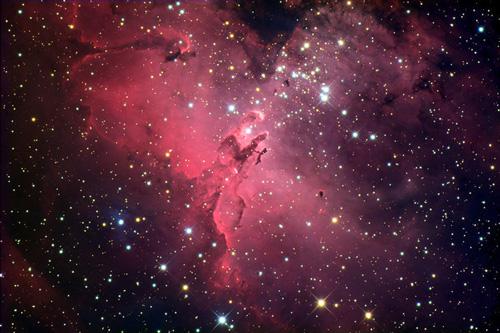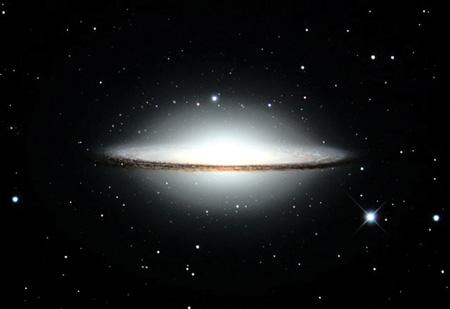Dr. Joseph D. Schulman will present a program of astronomical imagery, “Wonders of the Night Sky: Astrophotography and the Story of the Schulman Telescope,” at the Academy Art Museum, Easton, Maryland, on Thursday, June 27, 2013 at 6:00 p.m. Dr. Schulman will take the audience into the vast world of galaxies, planetary and light and dark nebulas, and globular star clusters to observe the visual and scientific splendor of these sights as seen and photographed with a high resolution telescope.

Messier 16, Eagle Nebula. Mt. Lemmon 24 inch R-C, LRGB, original frames by Adam Block, processing by JDS.

A retired physician, medical researcher, and founder of the Genetics & IVF Institute, where he is still Chairman of the Board, Schulman was part of the team that developed in vitro fertilization (IVF) making several major contributions to this field through his own research. He is one of the pioneers in the creation of the specialties of assisted reproduction and prenatal genetics in the U.S, and was the impetus behind the development of many important concepts and techniques now standard in these fields.
Schulman had a telescope as a teenager, but it was not until he purchased a home in Palm Springs in 2001, where there are few clouds and little ambient light to interfere with views of the heavens, that he again returned to observing the sky. He acquired a small telescope for direct visual observation. Then his daughter gave him a basic CCD camera to mount on the telescope, and as he examined his first photograph he realized he could now see things previously invisible to him. He read , learned, and acquired larger telescopes and higher quality cameras for taking high-resolution CCD astrophotographs and later began a web site (www.astrophotographyonline.
Out of this keen interest came Schulman’s concept and proposal to the University of Arizona to provide, through the Schulman Foundation, a 32” telescope for the University of Arizona’s Mount Lemmon Observatory with the capability of being accessed and controlled online by the public. It took over four years to plan and build the telescope which was installed in 2010. It is believed to be the largest telescope in the world currently available for use by amateur astrophotographers worldwide. The Mount Lemmon SkyCenter is located 17 miles northeast of Tucson, Arizona.
Taking full control of a large instrument like the Schulman 32” telescope is a dream experience for an amateur astronomer. Using any web browser the connection to the telescope is made through a program called Astronomer Control Panel (ACP) which handles computer control of the telescope and the photographic recording process. Real time imaging gives the operator feedback as to what is happening at the observatory atop its 9,157 peak. The very first comet discovered by the Schulman telescope was found through remote control by an amateur astronomer in Slovakia, Tomas Vorobjov, using the remote control feature. It was the chance observation of a previously unknown comet passing near Jupiter.
An additional feature of this Academy of Art Museum program will be a specially-made video presentation made at the SkyCenter in Arizona for the Museum. Renowned University of Arizona astrophotographer, Adam Block, who supervises activities at the Schulman telescope, will explain some of its features, and program attendees will be able to watch the telescope in both daylight and nighttime operation. Attendees will be eligible to participate in a Star Gazing event in the fall hosted by local astronomers who will setup telescopes and guide participants through the night sky.
Tickets cost $10 for Museum members and $15 for non-Museum member and are available online atwww.academyartmuseum.org or by calling 410-822-2787.



Write a Letter to the Editor on this Article
We encourage readers to offer their point of view on this article by submitting the following form. Editing is sometimes necessary and is done at the discretion of the editorial staff.